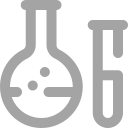
Product Description
MMAF hydrochloride is an antitubulin agent that inhibit cell division; inhibits H3397 cell growth with an IC50 of 105 nM.
IC50 & Target: IC50: 119 nM (Cytotoxicity, Karpas 299 cell), 105 nM (Cytotoxicity, H3396 cell), 257 nM (Cytotoxicity, 786-O cell), 200 nM (Cytotoxicity, Caki-1, cell)[1]
In Vitro: MMAF shows in vitro cytotoxicity against a panel of cell lines. The IC50 values for Karpas 299, H3396, 786-O and Caki-1 are 119, 105, 257, and 200 nM, respectively. Targeted MMAF is much more potent than the free drug, and that cAC10 conjugates of MMAF display pronounced activities. On a molar basis, the cAC10-L1-MMAF4 is an average of over 2200-fold more potent than free MMAF and is active on all the CD30-positive cell lines tested[1].
In Vivo: The maximum tolerated dose in mice of MMAF (>16 mg/kg) is much higher than MMAE (1 mg/kg). cAC10-L1-MMAF4 has an MTD of 50 mg/kg in mice and 15 mg/kg in rats. The corresponding cAC10-L4-MMAF4 ADC was much less toxic, having MTDs in mice and rats of >150 mg/ kg and 90 mg/kg in rats, respectively[1].

Information
CAS No1415246-68-2
FormulaC39H66ClN5O8
Clinical Informationclinicalinformation
PathwayCell Cycle/DNA Damage
Cytoskeleton
Antibody-drug Conjugate/ADC Related
TargetMicrotubule/Tubulin
Microtubule/Tubulin
ADC Cytotoxin

Specifications
Purity / Grade>98%
SolubilityDMSO : 27 mg/mL (35.14 mM; Need ultrasonic and warming)
Smilessmiles

Misc Information
Alternative NamesMonomethylauristatin F Hydrochloride
Observed Molecular Weight768.42